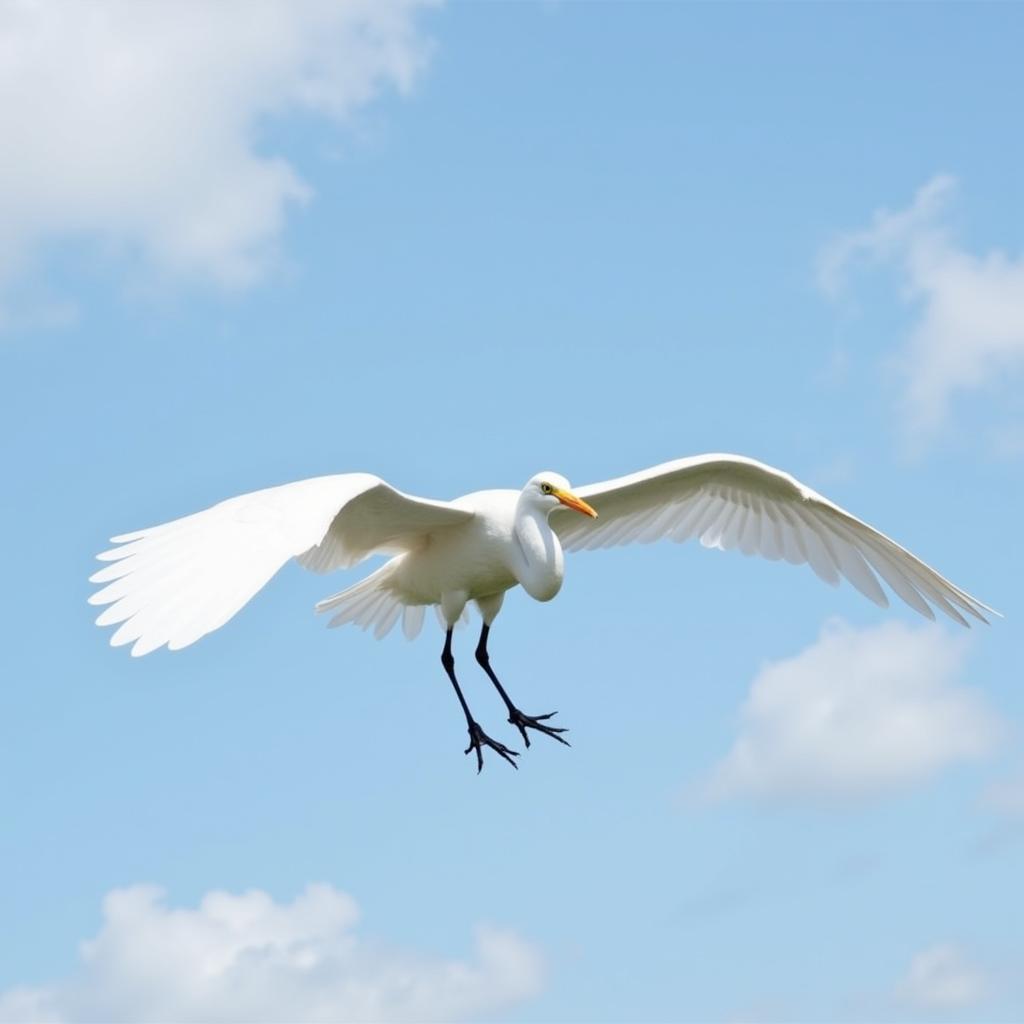The Great Egret, a majestic wading bird with snowy white feathers and a piercing yellow beak, holds a special place in the heart of the Audubon Society. This magnificent creature, once driven to the brink of extinction, has become a powerful symbol of conservation success and the ongoing mission to protect birds and their habitats.
From the Brink of Extinction: The Story Behind the Audubon Society Symbol Bird
In the late 19th century, the elegant plumes of the Great Egret, coveted for use in fashionable hats, became a hot commodity. Hunters, driven by profit, decimated egret populations across North America. Witnessing this senseless slaughter, a group of concerned citizens, led by the visionary George Bird Grinnell, founded the National Audubon Society in 1886, dedicated to the protection of birds and their habitats.
The Society adopted the Great Egret, then known as the American Egret, as its symbol, a poignant reminder of the species’ vulnerability and the urgent need for conservation. Through tireless advocacy, educational campaigns, and the establishment of crucial bird sanctuaries, the Audubon Society played a pivotal role in rescuing the Great Egret from the brink.
 Great Egret Soaring in Flight
Great Egret Soaring in Flight
The Great Egret Today: A Conservation Success Story
Today, the Great Egret, no longer a target of the plume trade, thrives in wetlands and coastal areas across North America. Their comeback stands as a powerful testament to the impact of conservation efforts and the importance of protecting our feathered friends and their natural environments.
The Great Egret’s recovery, however, doesn’t signify the end of the journey. As with many species, the Great Egret faces ongoing challenges, including habitat loss due to development, pollution, and climate change.
The Audubon Society’s Legacy: Protecting Birds and Their Habitats
Since its inception, the National Audubon Society has grown into one of the most influential conservation organizations globally. The bird that’s the symbol of the National Audubon Society, the Great Egret, continues to inspire their work, reminding us of the interconnectedness of all living things.
The Society’s mission extends far beyond the Great Egret, encompassing a wide range of bird species and their habitats. From advocating for responsible environmental policies to engaging communities in conservation efforts, the Audubon Society remains dedicated to creating a healthier planet for birds and people.
How You Can Help: Joining the Flock for Conservation
“The Great Egret’s story reminds us that even in the face of seemingly insurmountable challenges, hope can emerge,” shares Dr. Emily Carter, a leading ornithologist and conservation advocate. “By working together, we can ensure a brighter future for all bird species.”
You too can play a part in this vital work. By supporting organizations like the Audubon Society, advocating for bird-friendly policies, and making conscious choices to reduce your environmental footprint, you can contribute to a world where the Great Egret and all bird species can flourish for generations to come.
Frequently Asked Questions
What is the symbol of the National Audubon Society?
The symbol of the National Audubon Society is the Great Egret.
Why was the Great Egret chosen as the Audubon Society symbol?
The Great Egret was chosen as the symbol because its near extinction due to the plume trade sparked the formation of the organization.
How can I help the Audubon Society?
You can support the Audubon Society by becoming a member, donating, volunteering, and spreading awareness about their work.
What are some other birds the Audubon Society protects?
The Audubon Society works to protect a wide variety of birds, including Bald Eagles, California Condors, Piping Plovers, and many others.
Where can I learn more about the Audubon Society?
You can visit the National Audubon Society’s website at www.audubon.org to learn more about their mission, programs, and how to get involved.
Need Help? Contact Us!
For any assistance, feel free to reach out to us!
Phone Number: 02043854663
Email: [email protected]
Address: Khu 34, Bac Giang, 260000, Vietnam.
Our dedicated customer support team is available 24/7 to assist you.